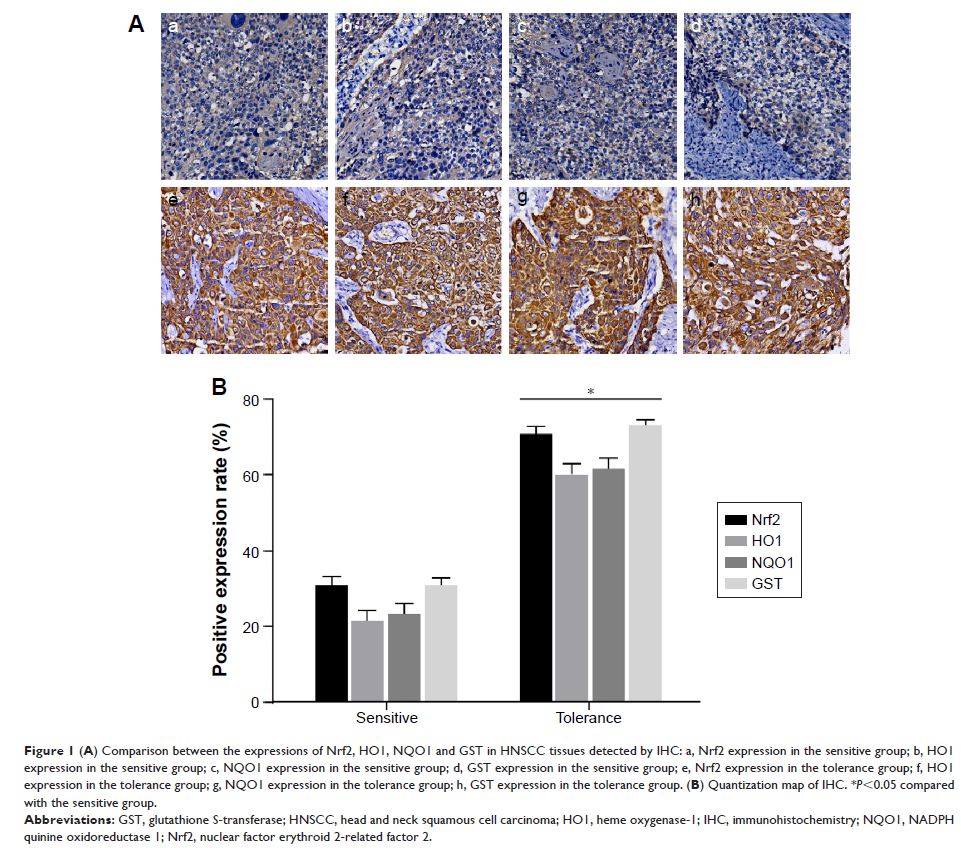9 0 5 7 8
论文已发表
注册即可获取德孚的最新动态
IF 收录期刊
- 2.6 Breast Cancer (Dove Med Press)
- 3.9 Clin Epidemiol
- 3.3 Cancer Manag Res
- 3.9 Infect Drug Resist
- 3.6 Clin Interv Aging
- 4.8 Drug Des Dev Ther
- 2.8 Int J Chronic Obstr
- 8.0 Int J Nanomed
- 2.3 Int J Women's Health
- 3.2 Neuropsych Dis Treat
- 4.0 OncoTargets Ther
- 2.2 Patient Prefer Adher
- 2.8 Ther Clin Risk Manag
- 2.7 J Pain Res
- 3.3 Diabet Metab Synd Ob
- 4.3 Psychol Res Behav Ma
- 3.4 Nat Sci Sleep
- 1.9 Pharmgenomics Pers Med
- 3.5 Risk Manag Healthc Policy
- 4.5 J Inflamm Res
- 2.3 Int J Gen Med
- 4.1 J Hepatocell Carcinoma
- 3.2 J Asthma Allergy
- 2.3 Clin Cosmet Investig Dermatol
- 3.3 J Multidiscip Healthc

Nrf2 信号通路在头颈鳞状细胞癌患者辐射耐受中的作用:体内和体外研究
Authors Wang T, Hu P, Li B, Zhang J, Cheng Y, Liang Y
Received 20 September 2016
Accepted for publication 21 December 2016
Published 23 March 2017 Volume 2017:10 Pages 1809—1819
DOI https://doi.org/10.2147/OTT.S122803
Checked for plagiarism Yes
Review by Single-blind
Peer reviewers approved by Dr Ashok Kumar Pandurangan
Peer reviewer comments 3
Editor who approved publication: Dr William Cho
Abstract: We aimed to investigate the relationship between the nuclear factor
erythroid 2-related factor 2 (Nrf2) signaling pathway and the radiation
tolerance of patients with head and neck squamous cell carcinoma (HNSCC). From
January 2015 to January 2016, 117 patients with HNSCC were enrolled in our
study and assigned into the sensitive and tolerance groups based on curative
effect. Immunohistochemistry (IHC) was conducted to measure protein expressions
of Nrf2, heme oxygenase-1 (HO1), NADPH quinine oxidoreductase 1 (NQO1) and
glutathione S -transferase (GST). Human
squamous cell carcinoma cell line, HSC-4, was induced by radiation to construct
the HSC-4-radiation resistance (RR) cell line. HSC-4 and HSC-4-RR were also
assigned into the blank, negative control (NC) and Nrf2 siRNA
groups. Cell Counting Kit-8 (CCK-8), quantitative real-time polymerase chain
reaction (qRT-PCR) and Western blotting were employed to detect cell viability,
mRNA expression and protein expression, respectively, of Nrf2, HO1, NQO1 and
GST. A total of 40 nude mice were equally assigned into the untreated, Nrf2 siRNA,
radiation therapy (RT) and RT + Nrf2 siRNA
groups. Compared with the sensitive group, patients in the tolerance group had
upregulated Nrf2, HO1, NQO1 and GST expressions. HSC-4-RR cell line had
improved cell viability and higher protein and mRNA expressions of Nrf2, HO1,
NQO1 and GST compared with HSC-4 cell line. Compared with the HSC-4-NC and
HSC-4-blank groups, the HSC-4-Nrf2 siRNA group
had downregulated cell viability. Compared with the HSC-4-RR-NC and
HSC-4-RR-blank groups, the HSC-4-RR-Nrf2 siRNA group
had lower cell viability. However, the HSC-4-RR-Nrf2 siRNA group
had elevated cell viability than the HSC-4-Nrf2 siRNA
group. Tumor volume and tumor weight in the RT and RT + Nrf2 siRNA
groups decreased evidently. The RT + Nrf2 siRNA group
exhibited decreased tumor volume and tumor weight in comparison with the RT
group. Our data demonstrated that downregulation of HO1, NQO1 and GST via
inhibiting Nrf2 signaling pathway reduces the radiation tolerance of patients
with HNSCC.
Keywords: nuclear factor erythroid 2-related factor 2, head and neck squamous cell
carcinoma, radiation tolerance, signaling pathway, heme oxygenase-1, NADPH
quinine oxidoreductase 1, glutathione S-transferase
